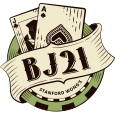Dynamic Career Bankroll Management

We see great trip reports by new and intermediate counters. But there is confusion about bankroll. Some counters don’t have any idea about bankroll. Some overbet and will get knocked out of the game permanently. Yet others are seriously underbetting. If this misunderstanding persists then they have little chance of significantly overcoming expenses and winning big in the long-run. I will argue there is a rational basis for novices to underbet. People have an emotional survival instinct that correctly reinforces this idea in the beginning. But eventually this instinct is wrong and will hold you back. It is important to distinguish the rational reasons for underbetting from the irrational reasons so you can ramp up and get serious bankroll growth.
By the way, there is nothing wrong with being a low-roller. Indeed, I'll argue you should be a low-roller at first. But there is nothing wrong with being a high-roller either! And with the proper understanding you can make the transition.
It is important to have a sense of bankroll to limit your risk/return. You could spread red chips on one day, green chips on another and black chips on another. But you would have a lower return and more risk than if you maintained a constant green chip spread. But this is what people do through their careers when they start small and grow large. The alternative is betting small forever, or starting out with black chips. What is going on?
Beginners instinctively suspect they might not have an advantage. There instincts may be right! Beginners are prone to mistakes, bad game selection, and other problems. In addition they need to learn to emotionally handle the fluctuations. Maybe you think you play a strong game. But unless you have tested with software and been watched by an expert you can't be sure. I suggest beginners pretend they have played 50 hours and lost .5% (the basic strategy disadvantage). If they drill with software, then they can pretend they have played only 25 hours with a small loss. Add these hours to your real results when estimating an edge. But in no case should you estimate results above your theoretical EV.
For example, you would first practice until you think you are playing perfectly. Suppose simulations show you have an hourly EV of 2 units with an average bet of 2 units and standard deviation of 30 units on a particular game (at 100 hands per hour). You start with 50 fictitious hours losing .5% or 50 units. So you would spread minimally (red chips) at first until you win. In your first 50 hours you might actually win 1 unit per hour. But remember, you must also include those 50 fictitious hours losing .5% or 1 unit per hour. So your estimated EV is 0. Then you might hit a small winning streak over the next 50 hours and average 2 units per hour in your first 100 hours, +200 units. When you include your fictitious 50 hours, your results are equivalent to 150 hours winning 150 units, or 1 unit per hour. Then your next 250 hours hit a monster winning streak of 750 units per hour. But you know this is partly luck. Your real-world results are 350 hours with a cumulative win of 950 units. But you shrink that to 700 units because your theoretical results should only be 2 units per hour. At this point your fictitious 50 hours have little weight, making it to 400 hours winning 650 units, or 1.625 units per hour.
Let's summarize:
After 50 hours of small wins your estimated edge is 0.
After 100 hours winning 2 units/hour your estimated edge is 1 unit/hour.
After 350 hours of big wins your estimated edge is 1.625 units per hour.
Your estimated edge will never exceed 2 units per hour.
Your bankroll depends on your wealth and risk-aversion, but should be roughly one-fourth of your stock market exposure (unless you are extremely bullish or bearish). For somebody with $100K of stocks, including retirement funds, that is $25K. Your blackjack "unit" should equal bankroll*estimated_EV/variance. The variance is simply squared standard deviation, estimated reliably from simulations. In the example above the hourly variance is 900.
Here are the implications for your betting career. You might think of spreading 1-6 "units" on a good double deck game, or 1-10 on shoe games.
After 50 hours of modest wins you should still bet minimally.
After 100 of decent results your unit should be $28. You should quickly ramp up to green chip play.
After 350 hours of wins your unit should be $45. You should spread green-black.
Your unit will never exceed $56 until you grow wealthier.
This system prevents overbetting. Indeed, your estimated edge is only positive if you have won 50 units lifetime. You will only increase bets if you have been winning. Initial losing streaks will force you to retrench until you win again. But eventually this dynamic system will build up to black chips if your overall wealth can support it. If you are winning 2 units per hour with $45 units then you are making $90 per hour. In this case a few hundred hours of blackjack can make you wealthier. This additional bankroll will support higher bets and turn you into a high-roller.











Please log in or register to leave a comment